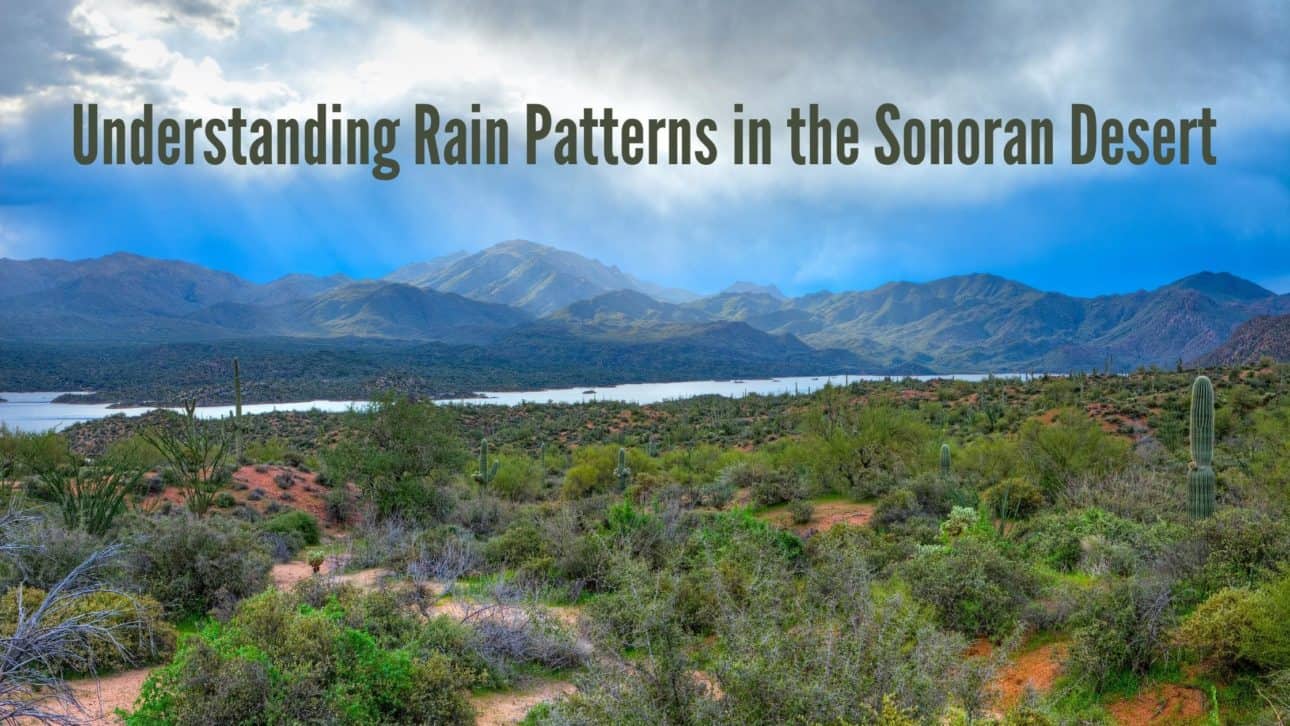- The Health Benefits of Using Sunshades - January 26, 2025
- How to Select the Right Color for Sunshades - January 17, 2025
- Fun New Year Events and Activities to Enjoy in Arizona - January 6, 2025
Living in the Sonoran Desert gives you an appreciation for rainfall and the water it brings. One of the hottest and driest areas of the country, the Sonoran Desert depends on infrequent and unpredictable rains. Life here has adapted to the aridity and the extreme fluctuations. Annual rainfall for the Sonoran ranges from 3 to 15 inches. Most native flora and fauna have evolved ingenious ways to conserve water and energy for when the desert is at its harshest.
Patterns, But No Guarantees
Key to understanding rainfall in the desert is to remember that while our location and climate produce a general pattern of wet and dry seasons, precipitation in the desert can not be depended upon. Rainfall in the desert can range from gentle showers to chaotic storms. Flash flooding can be unpredictable and dangerous. Similarly, typical rainy seasons can pass without so much as a raindrop.
In general, the Sonoran Desert of Arizona experiences two wet seasons: summer monsoons in July, August, and September and winter monsoons in December and January. While the promise of precipitation and storms is often present during these months, even monsoons don’t guarantee that water will reach the earth’s surface.
Location and Rain
The Sonoran Desert is situated in what is known as a “rain shadow” where little precipitation is capable of falling. Rain shadows are features of the inland side of mountains, especially near coasts. Air that blows in from ocean wind currents is pushed up the sides of mountains. As elevation rises, the air drops in temperature and loses much of its ability to hold moisture. This causes rain and snow on the coastal sides of mountains.
The air that makes it over a mountain range is extremely dry, dropping its moisture before it reaches the other side. For Arizona, this means that our surrounding mountains, especially to the West, send air in our direction that holds too little moisture to produce significant rain.
Our desert climate is also the result of our latitude. The earth’s atmosphere moves equatorial heat poleward, cooling as it moves. At around 30° latitude from the equator, this warm air sinks and stabilizes. The result is bands of deserts that develop along 30° latitudes north and south of the Earth’s equator, marked by warm temperature.
Monsoons
Although we associate monsoons with rain, monsoons are actually defined by the seasonal wind patterns that guide them. Weather patterns on the Pacific Coast and Southwest dictate the two distinct monsoon seasons in the Sonoran Desert of central Arizona. During the summer, changes in the air pressure of the atmosphere allow precipitation and air current to sweep in from the Pacific Ocean around Baja California. These weather patterns curve into the Sonoran Desert and come to the Phoenix and Tucson areas via the southeast.
Summer monsoon rainfall is complicated by the desert’s extreme heat. Arriving in the intensity of midsummer, precipitation from monsoons can evaporate before hitting the earth. The intense heat rising off the desert’s surface can create intense thunderstorm formations, known as “thermals,” which roll in as intense thunderstorms but may or may not produce rain.
Our winter monsoon seasons are less complicated by extreme heat than the weather patterns of the summer. Winter monsoons originate farther north up the Pacific Coast as storms are pushed inland. Pressure patterns in the atmosphere and cooler surface temperatures allow more storms to make it past the mountain ranges that separate us from coastal climates. The path of these storms is easier to track and rainfall is easier to anticipate.
A Precious Resource
Water in the desert is extremely precious, and one of the primary resources we need to conserve. Currently, human life in the desert depends on draining limited resources like groundwater and aquifers. Reducing household water usage is an area-wide effort where you can make a difference by learning easy and effective ways to cut the amount of water you use. From taking advantage of water and energy-efficient appliances to harvesting rainwater to switching your landscaping to desert-adapted plants, there are many ways to make the desert’s limited water stretch. Local ecology groups and public programs throughout the state can offer great tips on how to get started being water-wise in the Sonoran Desert.

